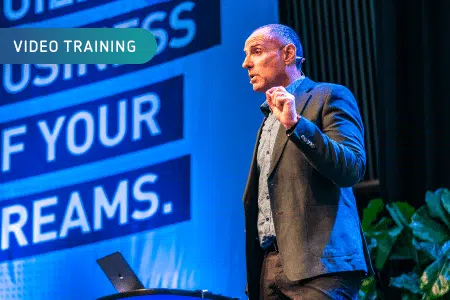Profit First gets a lot of publicity because of that fabulous word: profit, but how do you set it up in your business, and is it a good idea to do so?
As an accountant, I’m a big fan of the methodology. With the understanding that it’s not a perfect world and things can go wrong from time to time, here’s an introduction to Profit First.
Developed by an American entrepreneur named Mike Michalowicz, Profit First is a financial management system that is easy, and quick and helps you to understand the day-to-day financial movements of your business. The goal of the system is to stop you from overspending with the idea that you’ll have profits in the future, and get you to set profits aside as a habit.
It does away with complicated technical accountant speak and puts the power in your hands, by making profit your primary focus as a business owner.
Remember, profit is not a dirty word. As much as positive testimonials and high turnover are wonderful things, what you really want from your business is money in the bank that you don’t have to give to someone else. Not only that, but you deserve a profit in return for the hard work it takes to run a business.
The system
The beauty of Profit First is that it is an entirely practical and simple system that takes only six steps.
Work through these six steps, and you will be on your way to ‘stop the bleeding’ and make sure your business is giving back to you:
-
Step 1
Step one is the most complicated, and it’s best to seek professional advice to ensure you get it right.
You need to start by analysing your business finances. This means figuring out what you are actually spending your income on. This can be things like:
- Wages and salaries
- Rent
- Production costs
- TaxDon’t forget your own owner’s compensation. To work this out, think about what you would pay someone else to do your job and aim to give yourself a similar amount.
With this all sorted out, you can start to understand how much revenue you should be allocated to pay debts and bills.
This is only the beginning of a long process. To get Profit First running successfully will take from 12 to 18 months so pace yourself and don’t get discouraged. In the initial phase, your accountant may present you with some uncomfortable truths. It’s better to hear them now instead of down the track when things are worse.
-
Step 2
Step two is your first practical step.
Now, you set up your specific bank accounts for all your outgoing and incoming cash flow. I recommend you set up these accounts in two separate banks for the system to work properly.
In the first bank, which will be your main bank, set up accounts for these:
- Income: This is the account you nominate on the bottom of your invoice where all your incoming cash flow goes to start with.
- GST/Tax: This account is for the money you will need to pay tax bills. Get in the habit of putting money aside and you will never be stressed at tax time.
- Profit: This is your profit goes.
- Owner's Compensation: Your personal salary goes in here
- Operating Expenditure: This account is for direct debits, salary, wages and expenses of this natureThe idea of using a second bank is that it is out of sight, out of mind. The funds in this bank are there for when they are needed. The accounts in your second bank will be:
- Profit hold account
- Tax hold account for income tax
- Drip account
- Capital expenditure
- Vault (a cash reserve for big expenses)When you break all these down, that’s a lot of money going in a lot of directions. It shows you need to be charging the right amount to cover your costs (that’s a discussion for another day). Your personal salary goes in here
-
Step 3
With all your bank accounts set up, it’s time to distribute your current funds.
Take what you have and distribute it amongst all the accounts, to cover what is needed. Most importantly, ensure you put something in your profit account, even if it’s one dollar. The point of Profit First is to grow that profit account, so start right away with any amount you can.
Put aside a set time for allocating money. You might do it once a week at the end of the week or twice at the beginning and middle. Whatever works for you.
- Step 4
Once you have decided on when to do your financial allocations, stick with it. Make it your routine and keep the tempo going. You may find you need to test things and adjust here and there to get it right, but keep going, even if you experience a setback at some stage (and you probably will).
- Step 5
Step five is possibly the most fun step. Rewards are important in maintaining momentum on any project, so this is where you reward yourself. Take some of what’s in your profit account and use it for something fun. It might vary greatly depending on how much cash you have in the account, but I think you should take a percentage and enjoy it. Whether it’s as simple as a bottle of wine with your partner or as big as a holiday, use some of your profit for yourself and your family. It’s your business after all. - Step 6
The final step is to revisit the process. Every quarter, come back and revise where you are and determine whether any changes might be necessary.
Final note about Profit First
Profit First is designed to be easily workable by any business owner, but getting your accountant involved is still a bright idea.
Talk through the theory with your accountant and let them know you want to apply this methodology, and then enlist their help to ensure that you get everything right, especially more technical details like how much tax to put aside.
At Financial Fanatics, we love Profit First. Let us help you make the most of this system so your business can grow.













